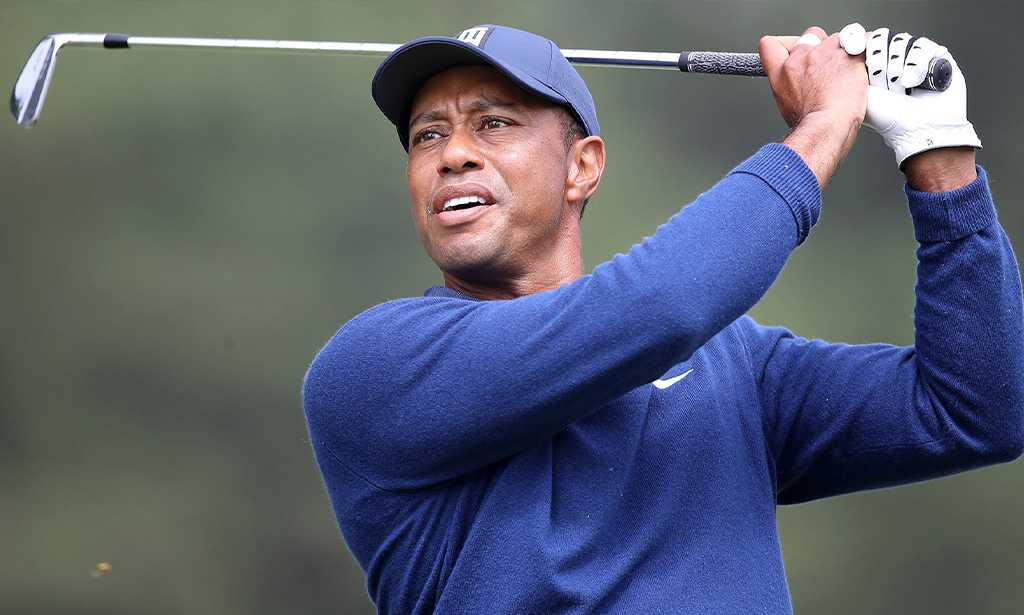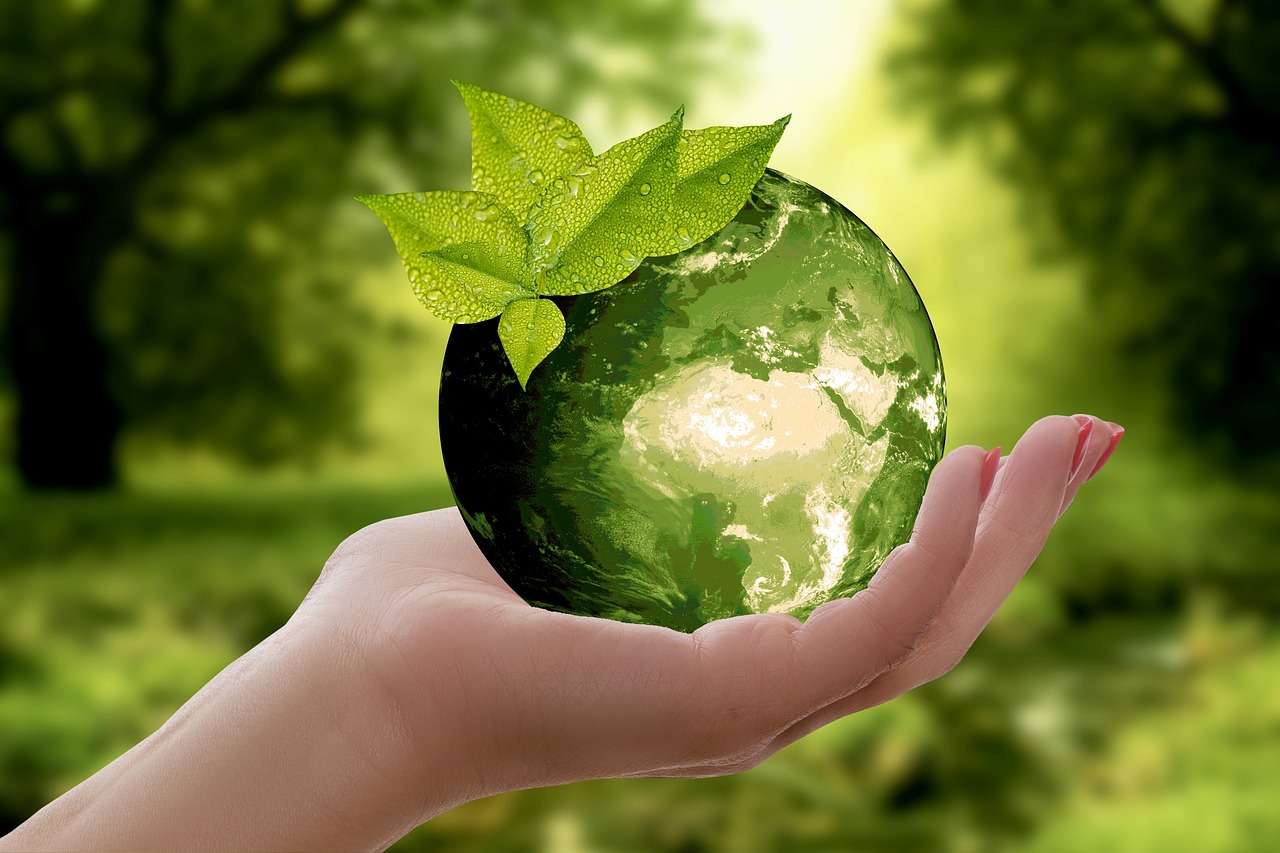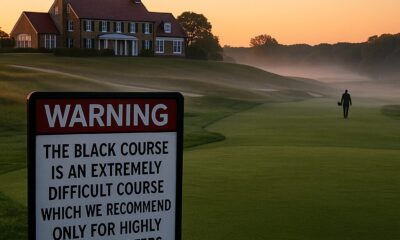Blog
Tiger Breaks His Silence Regarding his Return to Golf

In his first in-depth interview since his February car accident, an upbeat Tiger Woods shed light on his traumatic injuries, recovery and what the future might hold.
“I think something that is realistic is playing the tour one day—never full time, ever again—but pick and choose, just like Mr. [Ben] Hogan did. Pick and choose a few events a year and you play around that,” Woods said during a Zoom interview with Golf Digest’s Henni Koyack from his South Florida home. “You practice around that, and you gear yourself up for that. I think that’s how I’m going to have to play it from now on. It’s an unfortunate reality, but it’s my reality. And I understand it, and I accept it.”
Watch the complete video interview below:
“I don’t have to compete and play against the best players in the world to have a great life. After my back fusion, I had to climb Mt. Everest one more time. I had to do it, and I did. This time around, I don’t think I’ll have the body to climb Mt. Everest, and that’s OK. I can still participate in the game of golf. I can still, if my leg gets OK, I can still click off a tournament here or there. But as far as climbing the mountain again and getting all the way to the top, I don’t think that’s a realistic expectation of me.”
Woods suffered comminuted open fractures to both the tibia and the fibula in his right leg after losing control of his vehicle outside of Los Angeles on Feb. 23. He was rushed to Harbor-UCLA Medical Center and subsequently transferred to Cedars-Sinai Medical Center, where he spent three weeks and faced the possibility of amputation.
“There was a point in time when, I wouldn’t say it was 50/50, but it was damn near there if I was going to walk out of that hospital with one leg. Once I [kept it], I wanted to test and see if I still had my hands. So even in the hospital, I would have [girlfriend] Erica [Herman] and [friend] Rob [McNamara] throw me something. Throw me anything.”
One of the first memories Woods has after the accident is asking for a golf club to toy around with while in his hospital bed. Such began a rehabilitation process that included three months in a hospital-type bed in his home. Next, a wheelchair. He then progressed to crutches, which allowed him to regain independence and move around at his own will.
“Adding that part into my day-to-day life was so rewarding because I’d been stuck in a house. Granted, it’s a pretty nice house I’ve built for myself, but I hadn’t been able to do the one thing I love to do: I love to go outside and just be outside. Sometimes I just crutch and lay on the grass for an hour because I want to be outside. Missing the contact of a golf ball hit properly is one of the better feelings.”
Woods’ rehabilitation has been a frustrating up-and-down ride—he says he actually expected to progress faster than he did—and, in the dark days shortly after the accident, he says he reverted to a mentality he learned from his father.
“This is where dad’s teaching came into play being in the military and being SF [special forces]. Any SF operator can attest to this—you don’t know how long a firefight is gonna take. It could last five seconds or five hours and some could go on for days at a time. With that in mind, you don’t know when the end is so that’s the hard part. How do you get through that? One of my dad’s ways of getting through that was live meal-to-meal. … I just shortened up the windows of, Oh, this is gonna be nine months of hell, to It’s just two or three hours. If I can repeat these two to three hours at a time. Next thing you know it adds up, it accumulates into weeks months and to a point where here I am talking to you and walking into a room.”
Once he was cleared to practice putting, Woods lengthened the famous Scotty Cameron Newport 2 putter that he used to win 14 of his 15 majors, for he couldn’t bend over the same way he used to. Next came chipping competitions with his son, Charlie, and eventually clearance to begin very limited full-swing practice. Woods posted a video of him flushing a short iron to social media last week, which fueled significant hype and speculation on a return. But Woods suggested he is nowhere near ready to compete on the PGA Tour.
“I have so far to go … I’m not even at the halfway point,” he said. “I have so much more muscle development and nerve development that I have to do in my leg. At the same time, as you know, I’ve had five back operations. So I’m having to deal with that. So as the leg gets stronger, sometimes the back may act up. … It’s a tough road. But I’m just happy to be able to go out there and watch Charlie play, or go in the backyard and have an hour or two by myself with no one talking, no music, no nothing. I just hear the birds chirping. That part I’ve sorely missed.”
Woods said the prospect of playing with his 12-year-old son has motivated him greatly throughout the process. Some of the first post-accident images that surfaced were of Woods watching Charlie at tournaments around Florida.
“I went to golf tournaments to watch him play, and I’m looking at some of these scores he’s shooting and I said, How the hell are you shooting such high scores? I gotta go check this out,” he told Koyack. “So I’d watch him play and he’s going along great, he has one bad hole, he loses his temper, his temper carries him over to another shot and another shot and it compounds itself. I said, ‘Son, I don’t care how mad you get. Your head could blow off for all I care just as long as you’re 100 percent committed to the next shot. That’s all that matters. That next shot should be the most important shot in your life. It should be more important than breathing. Once you understand that concept, then I think you’ll get better.’ And as the rounds went on throughout the summer, he’s gotten so much better.”
Messages of support and encouragement have poured into Woods’ phone and inbox since the accident—including a call from the president, which Woods cannot recall without laughing about hearing “the White House on line 1.” He also expressed deep gratitude for the way the golf community has embraced him. A number of PGA Tour players have visited Woods at different stages of his recovery, perhaps no one more frequently than Justin Thomas.
“The Thomases and the Woodses are like family,” he said. “JT is like the brother I never had, and Charlie is like the little brother that JT never had.”
Woods will make his first public appearance since the accident at this week’s Hero World Challenge, a 20-man tournament in the Bahamas that benefits his foundation. That he is upright and present this week is hugely encouraging, but Woods knows there is still a long road ahead.
“There’s a lot to look forward to, a lot of hard work to be done—being patient and progressing at a pace that is aggressive but not over the top. Obviously, when I get in the gym and I get flowing and the endorphins get going, I want to go, go, go,” he said. “That’s how I’ve been able to win so many tournaments. But then again, everyone reminds me at what cost? Look at you now. Pre-accident I was what? Ten surgeries. That’s just the wear and tear of doing my sport, of just trying to push it to win everything I possibly can. To win every single tournament I played in, I would do everything I possibly could. Like any sport, there’s a cost to it. There’s a cost of doing business and unfortunately, for sportsmen and sportswomen, injuries are a part of it.”
This article originally appeared on Golf Digest.
Blog
Sustainability in Golf: The Future of Eco-Friendly Greens
Read about the environmental impact of golf courses.

Golf, a sport often associated with pristine, manicured greens and lush landscapes, isn’t historically perceived as eco-friendly. However, with growing concerns about climate change and sustainability, the golf industry is steadily transitioning towards more sustainable practices. This article will explore how golf courses around the world are becoming greener and more eco-friendly while maintaining their appeal to golf enthusiasts.

The Environmental Impact of Golf Courses
Golf courses traditionally use extensive resources, including water, pesticides, and fertilizers, which can have detrimental effects on the environment.
-
-
- Water Usage: Maintaining the verdant landscapes of a golf course requires enormous amounts of water. This is particularly concerning in regions where water scarcity is a significant issue.
- Pesticides and Fertilizers: To keep golf courses lush and free of pests, large amounts of chemicals are often used. These substances can seep into the ground, polluting water sources and harming local wildlife.
- Habitat Disruption: Golf courses often displace natural habitats, upsetting local ecosystems and reducing biodiversity.
-

Green Initiatives in Golf: Sustainability on the Fairways
Recognizing the environmental impact, many golf courses are now implementing sustainable practices to reduce their ecological footprint.

Water Conservation
Water conservation is a significant focus in eco-friendly golf course design. Methods employed include:
-
-
- Recycled Water: Many golf courses are now using recycled water or rainwater for irrigation, significantly reducing the use of freshwater resources.
- Drought-resistant Grass: Some courses are opting for drought-resistant varieties of grass that require less watering.
- Irrigation Technology: Advanced irrigation systems can efficiently distribute water, minimizing waste.
-

Reducing Chemical Usage
Reducing the use of harmful chemicals is another crucial step towards sustainability in golf. This can be achieved through:
-
-
- Organic Fertilizers and Pesticides: Many golf courses are switching to organic alternatives, which are less harmful to the environment.
- Integrated Pest Management: This approach focuses on long-term prevention of pests through biological control and habitat manipulation, reducing the need for chemical pesticides.
-

Preserving Local Habitats
Golf courses are increasingly being designed to coexist harmoniously with local ecosystems. This involves:
-
-
- Preserving Natural Features: Instead of altering the landscape to fit the course, designers are now incorporating existing natural features into the design.
- Creating Wildlife Habitats: Some golf courses are creating habitats for local wildlife, promoting biodiversity.
-
Case Studies: Sustainable Golf Courses Around the World
There are several golf courses worldwide that serve as excellent examples of sustainability in the industry.
- Pebble Beach Golf Links, USA: This renowned golf course uses recycled water for irrigation, reducing its freshwater use by 50%.
- St Andrews Links, Scotland: Known as the “Home of Golf”, St Andrews Links has implemented an extensive environmental management plan, including water conservation, habitat protection, and the use of organic fertilizers.
- Vineyard Golf Club, USA: This golf course in Massachusetts is one of the first to become fully organic, using only organic fertilizers and pesticides.
The Future of Sustainable Golf
The golf industry’s move towards sustainability is not just about eco-friendly practices on the course. It’s also about educating players and visitors about the importance of sustainability, thus promoting a culture of environmental consciousness.
While the transition to greener practices may be challenging, the benefits are immeasurable. Sustainable golf courses not only help protect the environment, but they can also enhance the playing experience, offering golfers the chance to play their favorite sport while surrounded by thriving, natural landscapes.
In conclusion, as awareness of environmental issues continues to grow, the question of “how green can the greens get?” is being answered by golf courses worldwide. Through innovative practices and a commitment to sustainability, the future of golf looks set to be greener than ever. As players, supporters, and enthusiasts of the sport, we can all contribute to this positive change by supporting golf courses that prioritize sustainability and by advocating for green practices within the golfing community.
Blog
The Golfer’s Holiday Hint-Dropping Guide
Your spouse thinks you want socks. You want a new driver. Here’s how to fix that.

Because subtlety is overrated when there’s a new driver on the line
Your spouse thinks you want socks.
Your kids think you want a tie.
Your mother-in-law is convinced you’d love another sweater with a reindeer on it, even though you’ve worn the last three exactly never, and everyone knows it, but somehow this year will be different.
It won’t be.
Here’s the problem. You want golf stuff. They don’t know what golf stuff means. You say “rangefinder” and they hear “robot finder.” You mention “premium golf balls” and they think all golf balls are the same, which is adorable but wrong, and you can’t exactly explain that without sounding like a crazy person who cares too much about dimple patterns.
So you need a strategy.
Not a subtle one either. Forget dropping hints like breadcrumbs. Drop them like anvils. We’re talking about a systematic campaign of suggestion, repetition, and strategic device-leaving that would make Madison Avenue jealous.
The Laptop Strategy (For the Tech-Savvy Golfer)
Leave your laptop open. Always. But not to just anything.
Open to golf retailer websites with items in your cart. Specific items. With the size, color, and model number clearly visible. And here’s the key – leave it open on the kitchen counter where your spouse makes coffee, because everyone looks at screens while waiting for coffee, it’s basically a law of physics at this point.
Do this for three weeks straight. Different items, same cart. They’ll get the message. And if they don’t, you’ve got a backup plan because you can just buy it yourself on December 26th when everything goes on sale.
The Casual Mention Method
This requires finesse.
Not too much though.
The goal is to work golf gifts into every conversation without seeming obsessed, which you are, but they don’t need to know that. Your daughter mentions her science project? “Speaking of projects, I’ve been thinking about upgrading my wedges.” Your son talks about his basketball shoes? “Funny you mention shoes – golf shoes with better traction would really help my game.” The mailman asks how you’re doing? “Great, though I’d be better with a new putter.”
Is this overkill? Maybe. Will it work? Absolutely.
The Magazine Massacre
Buy every golf magazine on the newsstand. Dog-ear the pages. Circle items in red pen. Write notes like “This would be perfect!” and “Honey, look at this one!” and leave them everywhere – the bathroom, the nightstand, the kitchen table, the car, their car, basically anywhere someone might sit for more than thirty seconds.
When they ask why there are seven golf magazines in the living room, just smile and say you’re “doing research.” Research for what? They won’t ask. They’re too busy looking at all those circled items with price tags helpfully highlighted.
The Strategic Screenshot
Text them screenshots. Daily.
“Look at this cool driver!” Send.
“These gloves are on sale!” Send.
“Remember when I mentioned wanting new golf shoes? These are the ones.” Send with three heart emojis because you’re not a monster, you still care about the relationship, you just also care about having the right equipment to shave three strokes off your game.
It’s called balance.
The Gift List That’s Not a Gift List
Create a shared note on your phone called “Gift Ideas” and fill it exclusively with golf items. When they ask what you want for Christmas, just say “Oh, I don’t know, I’m easy to shop for!” and then casually mention you made a little list of ideas, you know, just in case they needed inspiration, no pressure, but it’s organized by price range and includes links.
This works because you’re giving them exactly what they want – a clear shopping list – while maintaining the illusion that you’re being flexible. You’re not. But they don’t need to know that until after the presents are wrapped.
The Buddy System
Recruit your golf buddies. Have them “accidentally” call when your spouse is around. Make sure they loudly discuss the new equipment they just bought and how much it’s improved their game. Your spouse will hear. They’ll connect the dots. And if they don’t, have your buddy call again tomorrow. And the next day. Eventually, either your spouse will buy you golf stuff or they’ll buy you a different phone number, and honestly, both outcomes have their merits.
The Amazon Wish List Blitz
Create an Amazon wish list. Share it with everyone. Your spouse, your kids, your parents, your siblings, your coworkers, that guy you met at the driving range once, everyone.
Put forty items on it. Thirty-eight should be golf-related. The other two? A book and a candle, just so you seem reasonable and well-rounded, which you’re not, but again, they don’t need to know that.
Update it weekly. Add reviews in the comments like “Would really help my slice” or “These are the exact ones my pro recommended.” Make it impossible for them to buy anything else because everything else looks boring compared to golf equipment that promises to transform your game, which it might not, but the promise is what matters here.
The Direct Approach (For the Brave)
Just tell them.
Seriously.
Sit them down. Look them in the eyes. Say “I want golf stuff for Christmas. Specifically, I want this driver, these balls, and this rangefinder. Here are the links. Here are the specs. I’ve made it as easy as possible. Thank you for listening to my TED talk about my golf needs.”
Will they appreciate the honesty? Probably. Will you get what you want? More likely than if you kept hoping they’d telepathically understand that you need a new sand wedge because the grooves on your current one are worn down and it’s affecting your bunker play, which is already bad enough without equipment issues.
The Follow-Up Campaign
Don’t stop after dropping hints. Follow up. “Did you see that text I sent about the driver?” Ask during dinner. “Remember those golf shoes I mentioned?” Ask during breakfast. “Still thinking about that rangefinder.” Say it to no one in particular while watching TV.
Repetition is your friend. Marketing people know this. Politicians know this. Now you know this. Say it enough times and it stops being a hint and starts being a fact – you want golf stuff, they know you want golf stuff, and somewhere in the back of their mind, they’re starting to accept that golf stuff is happening this year.
The Backup Plan
Here’s the truth – they might still get it wrong. They might buy you golf-themed pajamas when you wanted golf balls. They might get you a gift card to a mini-golf place when you wanted a membership to a real course. They might wrap up golf socks, which are fine, but they’re not the GPS watch you’ve been talking about since July.
It’s okay. Say thank you. Mean it. Then on December 26th, hit those post-Christmas sales like a bargain hunter who knows exactly what they want and has been planning this shopping trip since Thanksgiving.
Because you have been.
And that’s fine. Golf equipment is expensive. If waiting one more day means you can get 40% off that driver you’ve been eyeing, that’s called being financially responsible. Your spouse will appreciate it. Eventually. After you explain why you needed three new wedges when you already have wedges.
“The grooves,” you’ll say.
They won’t understand.
But you’ll have new wedges.
The Real Gift
Look, here’s what matters. The holidays aren’t really about getting the perfect golf equipment, even though that would be nice, and you’ve spent considerable mental energy making sure everyone knows exactly what you want.
The holidays are about spending time with people you love. Even if they buy you reindeer sweaters. Even if they think all golf balls are the same. Even if they wrap up golf socks when you desperately need new grips for your irons.
They’re trying. That counts for something.
But also, leave your laptop open to that golf retailer website. Just in case. Because trying is good, but specific product links are better, and you didn’t make it this far in the season without having a solid Plan B.
Happy holidays. May your drives be long, your putts be true, and your gift-givers be observant enough to notice the forty-seven hints you’ve dropped since October.
And if all else fails?
There’s always next year.
Blog
Unveiling the History and Symbolism of Iconic Golf Trophies
Golf is a sport steeped in tradition, prestige, and class. From the lush greens of the course to the meticulously designed clubs, each aspect of the game exudes a sense of history and elegance.

Golf is a sport steeped in tradition, prestige, and class. From the lush greens of the course to the meticulously designed clubs, each aspect of the game exudes a sense of history and elegance. Among these elements, golf trophies – the coveted prizes of the tournament – hold a special place. These iconic awards not only represent the winning golfer’s skill and determination but also carry a rich history and meaningful symbolism. In this article, we’ll delve into the story behind some of the most iconic golf trophies and what they symbolize, offering a unique perspective on this beloved sport.
The Claret Jug: The Open Championship
The Claret Jug, officially known as The Golf Champion Trophy, is awarded to the winner of The Open Championship, one of the four major championships in professional golf. The trophy, first presented in 1873, replaced the original prize of a red leather belt with silver buckle.
Its design is based on the medieval ‘claret jugs’ used to serve wine. The symbolism here lies in the association of the jug with a time-honored tradition, reflecting the essence of the tournament itself. The names of all the previous winners are inscribed on the jug, creating a tangible link to the history of the sport.
The Green Jacket: The Masters Tournament
At The Masters Tournament, one of the most prestigious events in golf, the winner is honored with a distinctive green jacket. The tradition began in 1937 when members of the Augusta National Golf Club wore green jackets to distinguish themselves from the crowd.
The symbolism of the Green Jacket is twofold. Firstly, it represents membership of an exclusive club, as only winners of The Masters or members of the Augusta National Golf Club are entitled to wear it. Secondly, the green color reflects the lush, pristine condition of the golf course, a crucial aspect of the sport.
The Wanamaker Trophy: PGA Championship
The Wanamaker Trophy, awarded to the winner of the PGA Championship, is named after Rodman Wanamaker, who played a significant role in establishing the Professional Golfers’ Association of America. It’s one of the largest trophies in professional golf, standing nearly 2.5 feet tall and weighing 27 pounds.
The size and weight of the Wanamaker Trophy symbolize the magnitude and prestige of the tournament it represents. Moreover, engraved on its silver surface are the names of past champions, honoring the legacy of the game.
The U.S. Open Trophy
The U.S. Open Trophy, awarded to the winner of the U.S. Open, dates back to 1895. The trophy was destroyed in a fire in 1946 and had to be recreated from photographs of the original.
The trophy is a sterling silver cup, adorned with elaborate ornamentation. The names of previous winners are engraved on the base, acknowledging the tournament’s rich history. The trophy represents the pinnacle of achievement in American golf, symbolizing the grit and determination required to prevail in one of the sport’s most challenging competitions.
Golf trophies are more than just symbols of individual triumph; they are embodiments of the rich history, tradition, and enduring spirit of the game. From the Claret Jug’s reflection of time-honored tradition to the Green Jacket’s symbolization of exclusivity and pristine golfing conditions, each trophy carries a unique story and meaning. These iconic awards, while coveted for their prestige, also serve as a timeless reminder of the sport’s enduring allure and the unforgettable moments that define golf history.
-

 Product Review6 years ago
Product Review6 years agoThe Perfect Practice Putting Mat Review by Jason Tenzer
-

 Blog4 years ago
Blog4 years agoLoophole Rule Offers PGA Tour Pros a Mulligan
-

 Blog4 years ago
Blog4 years ago2021 Buyer’s Guide: The Top 10 Value Golf Balls For Distance & Feel
-

 Blog5 years ago
Blog5 years agoGolf Marriage Counselor
-

 Blog6 years ago
Blog6 years ago9 Biggest Chokes Of The Past Decade
-

 Product Review6 years ago
Product Review6 years agoTHE ADJUSTABLE IRONS: WALKING STICKS GOLF CLUBS
-

 Blog4 years ago
Blog4 years agoWhat Your Golf Clubs Say About You
-

 Equipment6 years ago
Equipment6 years agoOHK Sports Interview by Jason Tenzer






























